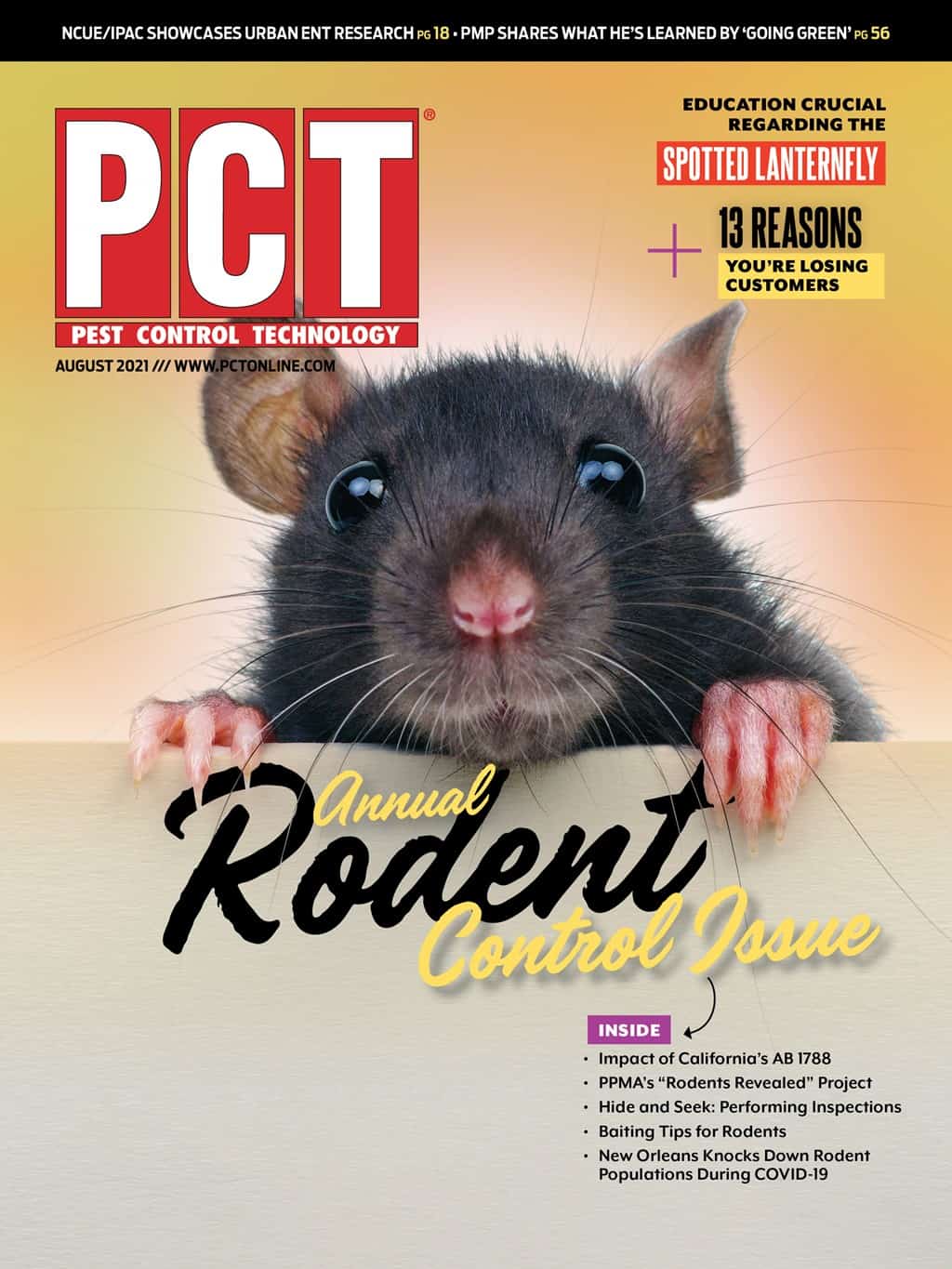
The City of New Orleans Mosquito, Termite and Rodent Control Board (NOMTRCB) took advantage of COVID-19-related conditions this past year to reduce its rodent population through persistent baiting, public education, pest proofing and pest exclusion, said Claudia Riegel, the board’s director. Riegel shared this information in an April webinar titled “IPM After the Storm — Vector Considerations,” held as part of EPA’s Integrated Pest Management Webinar series.
Rodent sightings increased after businesses on Bourbon Street and other commercial areas had to shut down because of the COVID-19 pandemic. This is because less trash was generated by businesses, which forced rats to come out of hiding in search of food.
COVID-era rodent behavior became more aggressive because of the stress from limited resources, Riegel said. Rodents will fight each other or even resort to cannibalism, which leads to population decline.
“So, it was really an opportunity to seize the moment, seize the day, because these animals were under stress. And when rats are under stress, this is your time to really move on control,” Riegel said.

SPECIFIC MEASURES. In order to educate the public, the mayor of New Orleans held a press conference to discuss how the community could help. For instance, citizens can be part of the solution by keeping trash cans and dumpsters covered, she said.
Storm drain baiting was used in an attempt to directly reduce the rodent population, but it was not very effective in this situation, Riegel said. Therefore, the strategy had to be pivoted using tamper-proof bait stations, which were placed on sidewalks by NOMTRCB and PMPs. In many locations, the rodenticide was consumed, and there were fewer rodent sightings, Riegel said.
It also was essential to recognize what other food sources were accessible to rodents, she said. In some locations, rodents could access palm tree nuts, so those needed to be cleaned up.

So, it really was an opportunity to seize the moment, seize the day, because these animals were under stress. And when rats are under stress, this is your time to really move on control.” — Claudia Riegel
Carbon dioxide in the form of Rat Ice (Bell Laboratories) was used to kill burrowing rodents and ectoparasites (e.g., fleas) on the rodents’ bodies simultaneously. Carbon dioxide is heavier than air, which causes it to quickly sink down into the burrow and fill it without leaving a residual. Riegel said that it is important to kill the ectoparasite in order to prevent a disease cycle with humans from occurring.
Many groups had to work together to reduce the rat population. To achieve this goal, manufacturers donated product and many PMPs donated their time by setting up bait stations, she said. The Louisiana Sanitarians did their part by enforcing the Louisiana Sanitary Code and cited local businesses, which resulted in businesses cleaning up problem areas.
One area of the city that was focused on were homeless encampments. Pest proofing was done in elevated areas by closing holes with concrete and by cleaning and fencing the areas. As a result, there are no longer pest issues in some of these encampments, Riegel said. However, some such areas continue to be a challenge since there are rodent resources available there.
Riegel said regarding the progress, “So my goal now is to keep the rodent numbers low because we’ve made such tremendous success over the last year.”

Explore the August 2021 Issue
Check out more from this issue and find your next story to read.
Latest from Pest Control Technology
- SiteOne Hosts 2024 Women in Green Industry Conference
- Veseris Celebrates Grand Reopening of the Miami ProCenter
- Rollins' 2024 Second Quarters Revenues up 8.7 Percent YOY
- Fleetio Go Fleet Maintenance App Now Available in Spanish
- German Cockroach Control Mythbusting
- Total Pest Control Acquires Target Pest Control
- NPMA Workforce Development Shares Hiring Updates
- Certus Acquires Jarrod's Pest Control





